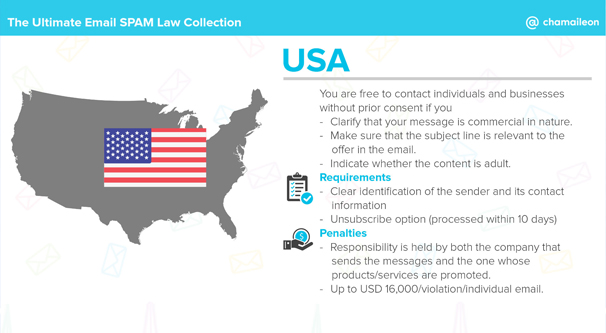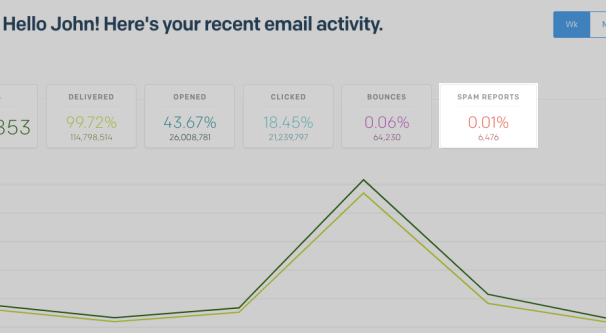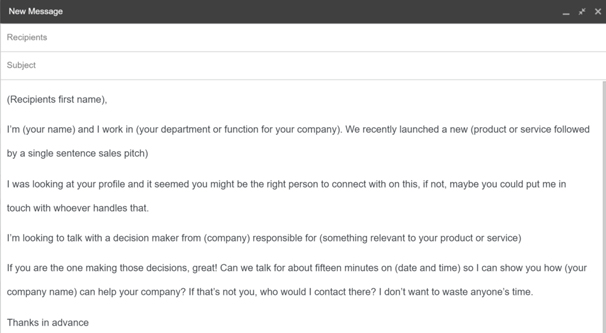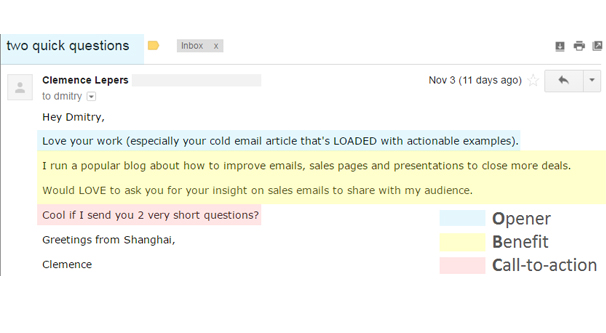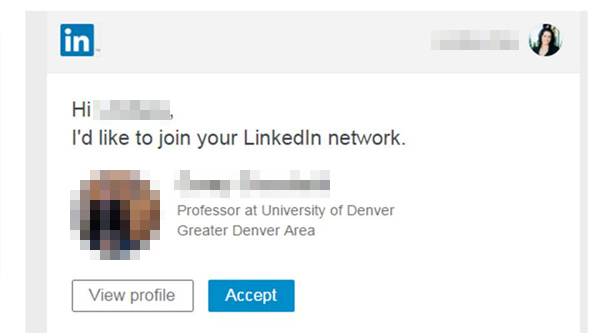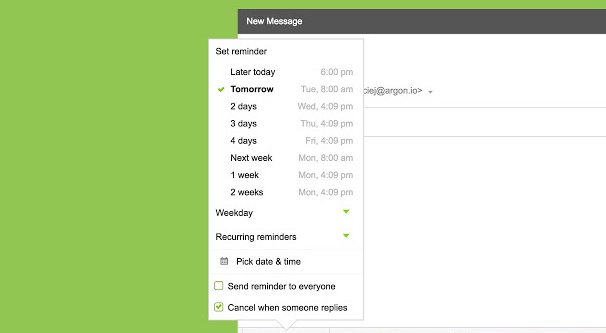Ultimate Guide to Response Rates and Cold Emailing
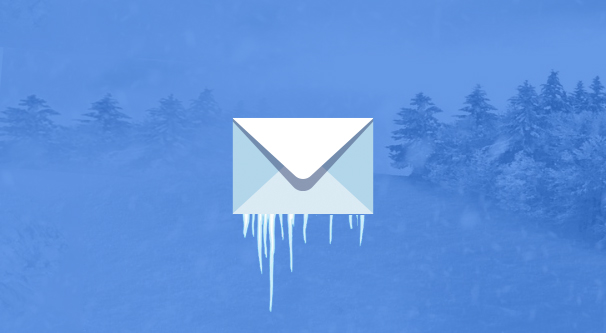
It’s not unusual to think of communications with a temperature involved. Email in particular can be considered hot or cold, depending on the state of the relationship you have with the person at the other end. Hot emails, hot leads, are contacts with people you’ve touched before, one way or another. Cold emails, on the other hand, are unsolicited.
Normally, it sounds like cold emails are, well, spam. And sometimes, they are. If you’re setting up your CMS to send 1,000 cold emails a day, chances are a huge portion of them are just going to end up in the spam folder. If you’re particularly unlucky, an ISP or even Gmail itself will learn that your domain sends a lot of unsolicited messages, and will blacklist you. It can be distressingly difficult to claw back from this situation.
Cold emailing is notorious for low response rates, because really, why should anyone care? If you’re checking your email and some name you don’t recognize sends you an email, are you going to open it? If you do, are you going to give it due consideration? A lot of times, it’s just spam that slipped through the filter. Sometimes it’s legit but insipid, and rarely is it worth the time it takes to read.
From the other side of the coin, though, cold emails are the only way to reach some people and build some relationships. You need to learn the skill of cold emailing, otherwise you’ll never make connections that you need to grow and improve. Cold email outreach is essential for everything from guest posting to business partnerships.
What follows is a series of important tips to keep in mind when you’re crafting any cold email campaign.
Before We Begin: Legality
When you’re sending out cold emails, one thing you have to be mindful of is the legal definition, and penalties, for spam. Spam emails are, believe it or not, actually illegal, though the penalties for sending them can vary wildly depending on their purpose. Some of those Nigerian Prince scammers have been arrested and jailed, while companies that simply unwittingly send out what is classified as spam end up fined.
According to the FTC, spam laws largely deal with emails with commercial intent. If you’re trying to sell a product or service in your email, it’s likely that it falls under spam laws. If you’re simply reaching out to build a social connection, you’re more likely to be safe.
1. Never Mass Send Cold Emails
Rule number one with cold emails is never, ever mass send them. If you’re writing one basic template and sending it off to a scraped email list of 500 businesses in your industry, well, you’re sending 500 emails to the junk bin. Even if a few people open them, you might just end up an example on What Not To Do.
Every single cold email needs to be a carefully personalized bit of outreach, tailored specifically to the person who is receiving it. I don’t care how easy it is to “personalize” a template, everyone recognizes templates. If the template is coming from some email management app, that’s even worse! How many other people are using that same management app, and how many of them have targeted the same person you’re trying to reach? Trust me when I say you really do learn to recognize templates when you see them.
2. Include the Right Information
Every cold email needs to have the right kind of information included in it. Some of that information is important enough I’ll be covering it in its own tips, but here’s a general outline.
Your real name. I don’t want to see “representative for BusinessName” or some made-up pseudonym I can’t Google. I want to know who specifically you are when you’re reaching out to me.
Note that this includes your email header! Many email programs let you customize the name that displays as the sender for your message, and you want your real name here, not a business alias or business name.
Your contact information. This can be in your signature, that’s fine. Just make sure to include your business name, your job title within the business, a link to your website, a social media profile or two, your phone number, and whatever other bits of personal information you feel is necessary to build a rounded communications profile. Don’t go overboard with every social media profile you’ve ever created or every business website you’ve ever written for, though. That quickly drowns out your message in the clutter.
A specific request. You’re send an email for a reason, so get to the point. More on this in tip number three.
An icebreaker or conversation starter. More on this one in number four.
All of this is information that separates your cold email from the dozens of spam messages any public figure receives on a daily basis. The more generic a message is, the less personal it is, the more likely your recipient is to just delete it. We all have too many emails to deal with every day as it is.
3. Value Your Recipient’s Time
Remember that your recipient is a real person with real responsibilities. They aren’t going to be checking their email 24/7, and they aren’t beholden to you if they don’t have a chance to answer right away. The fact is, you need to value their time if you want any chance at success.
In tangible terms, this means you need to keep your cold email short. I generally find that if you’re writing more than, say, 4-5 sentences throughout the full email, you’re probably stretching it too long. You don’t go into a huge long-winded introduction at your first meeting unless you’re John Galt, and you don’t want to be John Galt.
One sentence for introduction. One sentence for your connection with your recipient. One sentence for why you’re sending them a message in the first place. That gives you a bit of space for a quick quip or a bit of expansion on one of the three points. It should be plenty, with some space to spare.
4. Do Research and Look for Connections
Research should be the bulk of what you’re doing with cold emails. Half an hour of research will dramatically increase the success rate of your cold pitches, and beyond that, it gives you your foot in the door. When you’re successful with your research, your recipient might not even feel like it’s a cold email at all.
So what should you be looking for in your research? Look for points of commonality between you. Are you from the same state, same county, same city? Did you attend the same school, be it high school or university? Do you have mutual friends, either as casual friends or business acquaintances? Do you both share a mutual interest, in business or in pleasure?
Basically, you’re going to be cyber-stalking your target a little before you send your email. One thing you should never do, however, is fake these connections. If you message someone and mention your shared love of a particular novelist, but you’ve never read any of their work, it’s incredibly easy to be called out and left caught in a lie.
You want to find something that is both unique and specific. “We both attended state college” is not a hook. “We both attended MIT in the electrical engineering program” is a unique and specific hook.
Where should you look for your research? Here are some ideas:
- LinkedIn. LinkedIn is made for business networking, and can show you mutual connections very quickly. If you both know someone, particularly if that someone is a personal friend or in a close relationship with you, that’s a good hook. Distance connections you barely know are less valuable, but can be worthwhile in case your recipient looks you up on LinkedIn after the fact.
- Facebook. Some public figures like to keep their Facebook pages closed, and some do nothing but post a few memes or family photos, which don’t make for good hooks. Some live their lives in the public sphere, however, and Facebook can make for a good research tool. On top of that, you can pick up some good casual information, like books they’re reading or movies they’re really thinking about lately, and work that into your cold message.
- Personal websites. Many public figures, editors, journalists, and business owners maintain personal websites where they write about topics closer to their areas of interest or expertise. These can be a goldmine for useful information. Even just an up to date About Me page can be enough, sometimes.
- Twitter. Twitter isn’t for everyone, and some people use it very casually or in a “shitpost” kind of way that makes it hard to use anything they post as ammunition. Many will share links to content they have recently written, which can be a good source of hooks.
There are other sites as well, but they depend on the niche of the person you’re trying to reach. Still, even a good Google search can help you find plenty of content to use as hooks.
5. Keep Your Communications Personal
I’ve already basically mentioned this several times, but you need to make sure your communications are personal. Use the recipient’s first name. Mention your personal hooks up front. Don’t lead with a sales pitch. End with a casual question that leads to more conversation, not a sales pitch.
6. Use Email Tracking
This is almost a contentious issue, in certain circles. Some people hate email tracking. It’s a sign that an email is somewhat commercial, at least, and a little less genuine, perhaps. I know some business owners who use plugins like Ghostery to monitor when emails are being tracked and to disable that tracking, or simply discard emails that are tracked. They feel that anything that’s being tracked is disingenuous.
I say you can do a bit of research into this while you’re researching your connection. See if they’re on record speaking out against tracking emails. It’s fairly rare that someone is that stodgy about it, so most of the time tracking can help you with your follow-up messages. Speaking of:
7. Tactfully Follow Up
Everyone has a busy time. Everyone discards emails they aren’t just quite interested in at the time. Everyone has moments where the impending Inbox Zero is too tantalizing to worry about some message from someone you don’t know. After all, if it’s important, they’ll try again, right?
So try again. A second follow-up email, with your original quoted, is a good way to get eyes on your message a second time. More than once, I’ve hooked someone this way by dropping another connection’s name, or simply by following up at a different time of day. Maybe your first email arrived when the recipient was especially busy, but your follow-up arrives at a time where they can give it their full attention. You never know what circumstance you’ll find the recipient in.
How often and how soon you should follow up really depends on the person. I’ve known people who were successful on their fifth follow-up each spread a couple days apart. I’ve also known people who have blacklisted email addresses after the second follow-up just because they were annoying. The fact is, if your email is compelling enough, you won’t need more than one or two follow-ups.
Do you think you’ve got it down? I have an exercise for you. Pick five prominent entrepreneurs, editors, or public figures in your niche and do a bit of research. Write up samples of cold emails for each of them. Then compare what you produced to some of the best examples out there. Where do you stand up?


